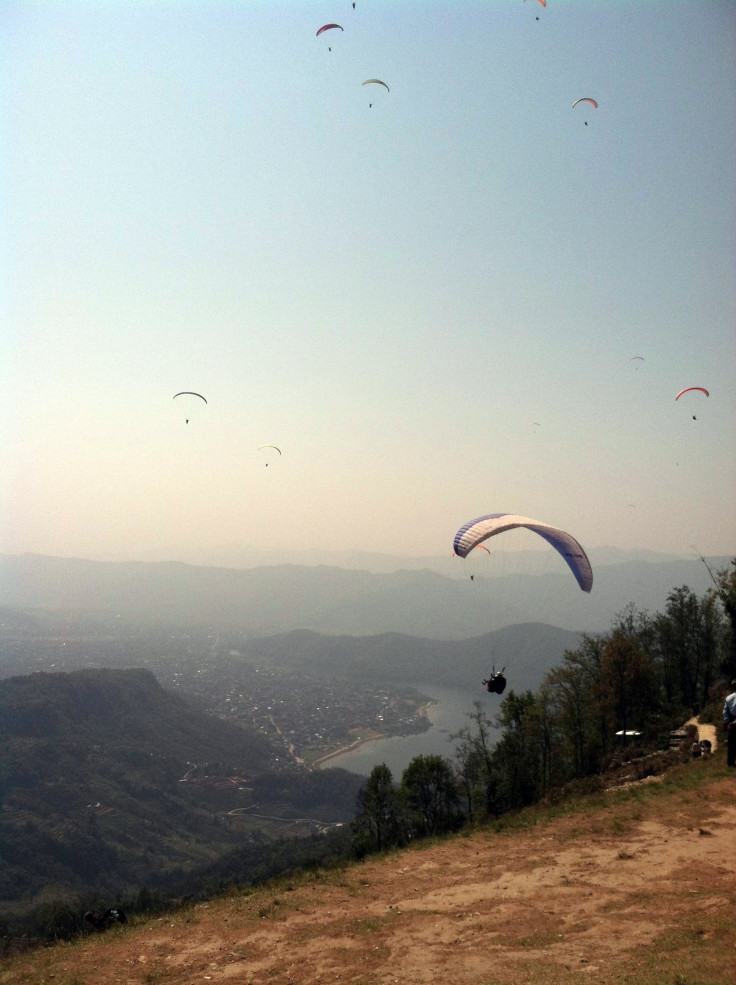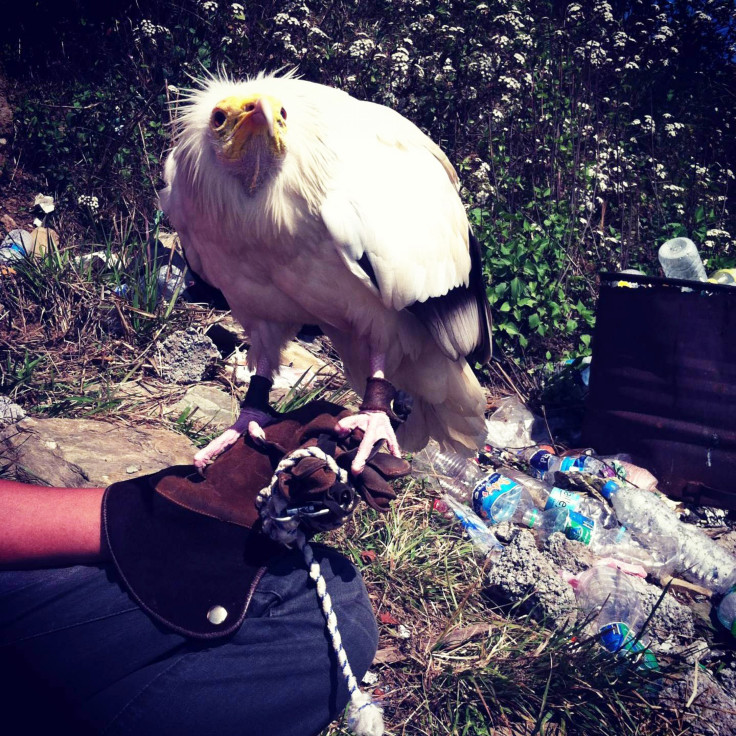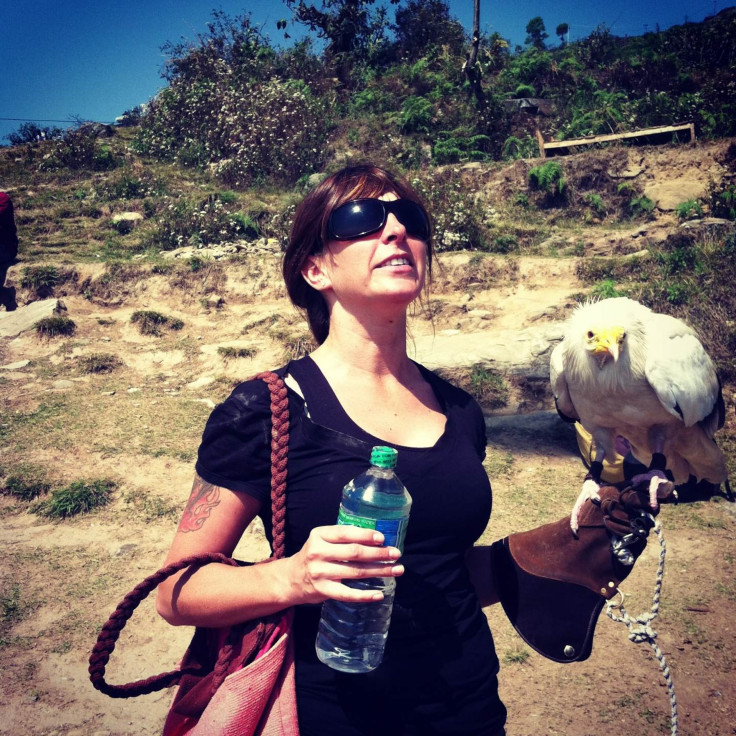How Do You Save Himalaya's Vultures? Have Them Fly With Tourists [PHOTOS]

On clear days, the rocky peak in the Himalayan foothills at Sarankot, Nepal, resembles a beehive. Dozens of paragliders swarm around the crag in the shadow of the world’s highest mountains searching for thermal currents, watching birds for clues. And for some flyers, the shriek of a whistle brings one of those birds in close: These are the parahawkers, aficionados of an adventure sport combining adrenaline with nature conservation.
It’s paragliding, the ultimate non-motorized adrenaline rush, combined with raptor rescue, a conservation item of urgent concern.
“As paragliders, we need the birds,” said Jessica Love, a parahawking pilot and veteran paraglider.
“We watch them for thermal currents and follow them,” she explained, pointing to a cluster of birds swirling in the air a few hundred meters away.
Love, a spunky and energetic pilot with tattooed arms, grew up in Northern California and got hooked on air sports after her first flight a decade ago. She now spends half the year working in Nepal and the other half competing in European paragliding competitions.
During tourist season, she flies several times a day with one of the two Egyptian vultures, Kevin and Bob, currently on staff. (The Neophron percnopterus is, despite its name, found also in Asia, and is an endangered species.)
Founded in 2001 by Scott Mason, a London native who has been training birds of prey since he was 10 years old, parahawking has grown steadily. Originally flying with a pair of hawks, the team retires birds after a certain number of years of commercial flying, and takes care of them in a lakeside aviary that doubles as a small tourist hotel.
Parahawking’s home, Pokhara, is a lakeside tourist trap teeming with backpackers that serves as a sendoff point for some of Nepal’s most popular trekking routes. An estimated 400 people a day paraglide from the peak overlooking the town.
“We are definitely unique, even in the world of paragliders. Some of our most enthusiastic clients are veteran professionals – they come and get so excited about flying with the birds,” Love said.
Tourism has been an important industry for Nepal as it recovers from a 10n-year civil war that ended in 2006. Pokhara has been a hot spot for adventure sports and boasts the world’s “steepest, fastest, and tallest” zip line, rock climbing, and motorcycle tours on the treacherous and winding paths leading to the Himalayas.
But the impetus behind the invention of parahawking is rooted in more than just high-octane fun. It started with a drug called Diclofenac.
Diclofenac is a commonly used anti-inflammatory and painkiller. It was introduced for veterinary use in recent decades, and then studies began to show that it was directly linked to the diminishing vulture population in South Asia. Some estimates put the population drop at 99 percent.
“Humans excrete it at a slow rate, and eventually it leaves our systems,” explained Tracy Jacobs, the aviary manager for Parahawking-Nepal.
“But cattle don’t process it, so it remains in their carcasses at high levels,” she explained. “When birds eat the carcass, they die within 24 hours.”
In a move heralded by conservationists, in 2006 Pakistan, India, and Nepal banned the drug, leading to a reported recovery in several species.
But concerns remain. Local media in Nepal routinely report vulture deaths, which observers sometimes attribute to farmers administering human Diclofenac to their cattle despite warnings not to.

The parahawking industry, combined with other conservation efforts in Nepal, has drawn fresh attention to a species known best for its scavenger skills. Pokhara’s parahawking company now operates a “vulture restaurant,” where they strategically drag carcasses free of Diclofenac to feed local vultures.
An incentive program that buys sick or old cows from farmers and then gives the hide back for free after they die is another attempt to improve the chances for vulture survival in South Asia.
But at the end of the day, the parahawking crew believes their biggest contribution to vulture conservation is raising awareness.
Or, as Love said as she cradled Kevin, “no one wants to hug a vulture. Until you fly with one.”

© Copyright IBTimes 2024. All rights reserved.




















